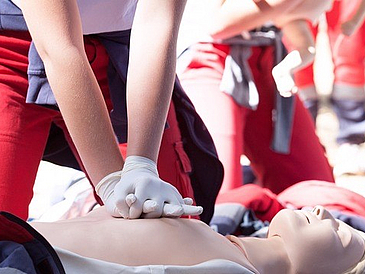When road traffic accidents occur, many first-aiders are overwhelmed. Completed when acquiring a driver’s license, first-aid courses mainly focus on the practical application of first aid. What is missing is training under real stress conditions. This is because traffic noise, the presence of gawkers as well as time pressure often have a negative impact on the decisions and actions of first-aiders.
The ARRIVE project (Acquiring the rescue chain in virtual reality), which Professor Björn Niehaves has been working on since January 2023 at the University of Bremen, picks up on these factors. Together with his team, the head of the Digital Transformation of Public Services (Digital Public) working group is working on how to integrate visual, social, or acoustic stressors into VR scenarios for first aid. In the future, this should make it possible to test first-aid measures under conditions that are as realistic as possible.
Training under Realistic Conditions
“So far, there are hardly any VR scenarios that can be used to train first aid,” explains Björn Niehaves. Moreover, these scenarios have so far not focused on the entire rescue chain, but only on individual aspects such as resuscitating injured persons. External stressors are ignored. As a first step, Björn Niehaves and his team identified stressors such as time pressure and traffic noise, which often occur in accident situations and are very disruptive.
The researchers are currently working on a VR simulation of a real accident site into which these stressors are integrated. “Together with test subjects, we then check to what extent stress is generated in the new scenarios,” explains Niehaves. On this basis, he and his team then develop a VR demonstrator. The project can also serve as a model for other stress scenarios, such as pilot and locomotive driver training.
ARRIVE will receive funding of 70,800 euros as part of the HOLM innovation funding program until the end of October 2023. HOLM (House of Logistics and Mobility) is a project promoter within the framework of the innovation promotion of the Hessian state government, with which it intends to further strengthen the competitiveness of Hesse as a business location.
Further Information:
www.uni-bremen.de/digital-public
Contact:
Professor Björn Niehaves
University of Bremen
Digital Transformation of Public Services (Digital Public) working group
Phone: +49 421 218-59875
E-Mail: niehavesuni-bremen.de
© Adobe Stock / wellphoto
Completed when acquiring a driver’s license, first-aid courses mainly focus on the practical application of first aid. What is missing is training under real stress conditions.

